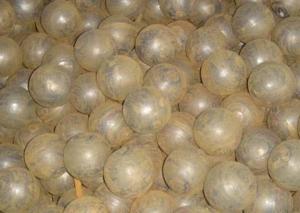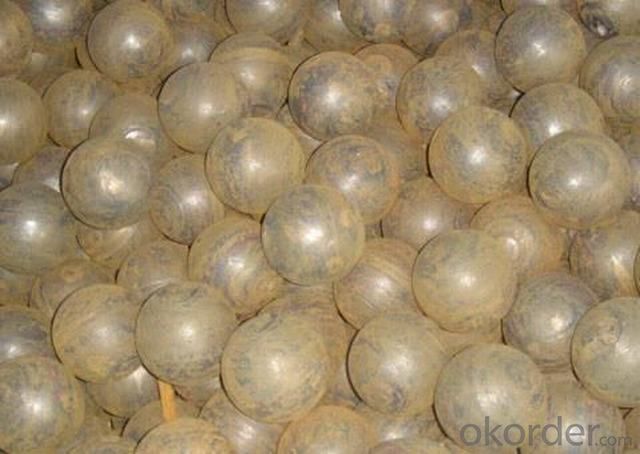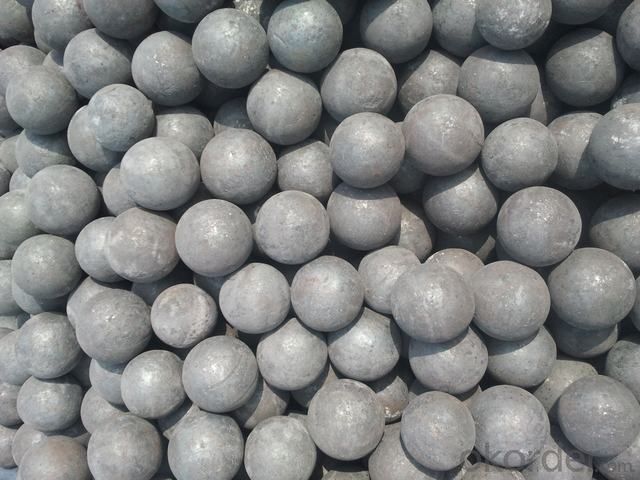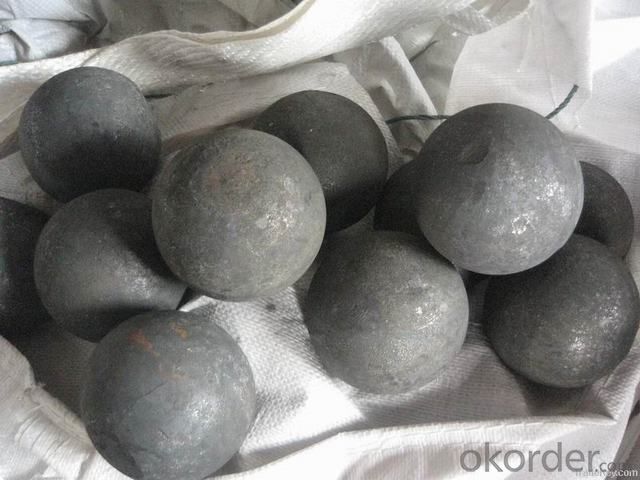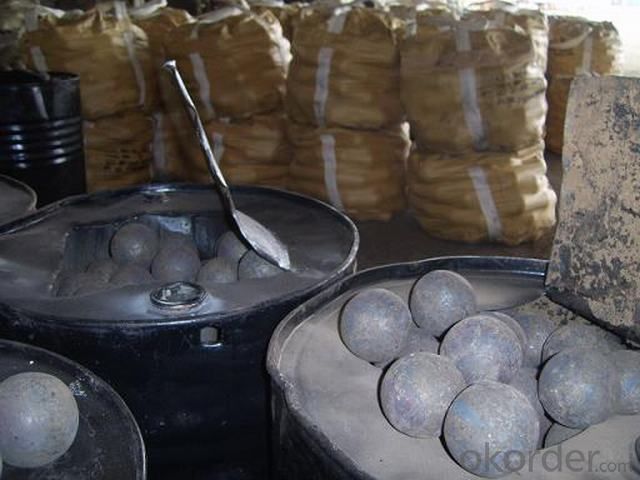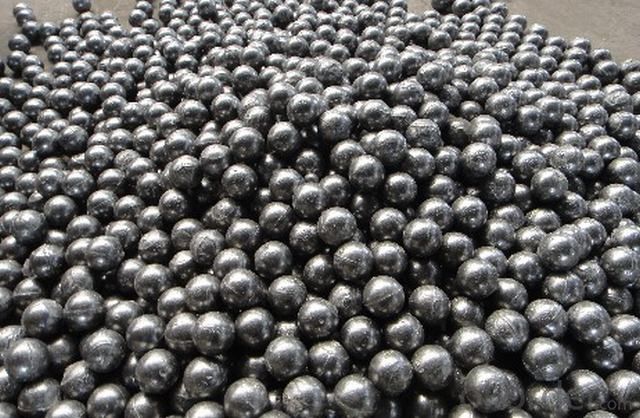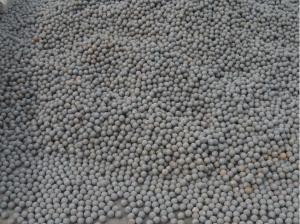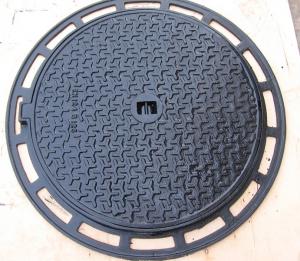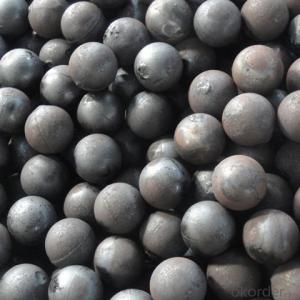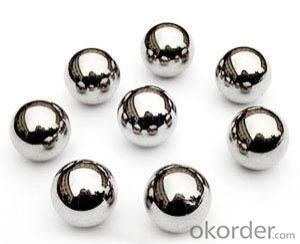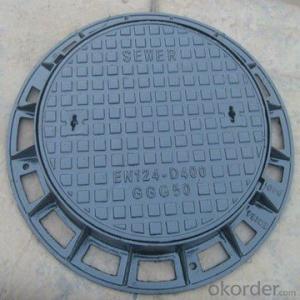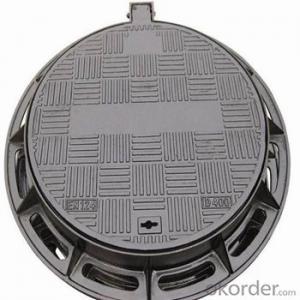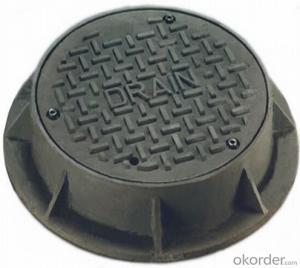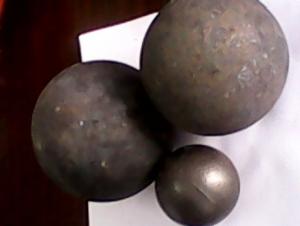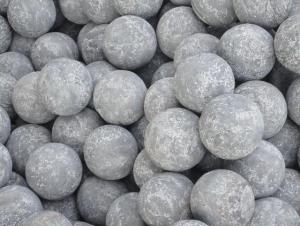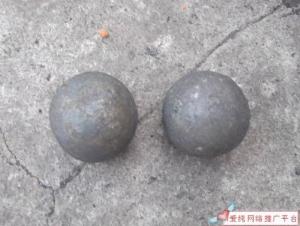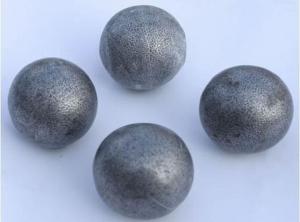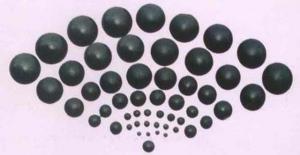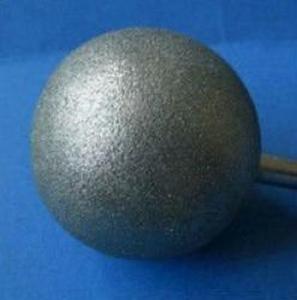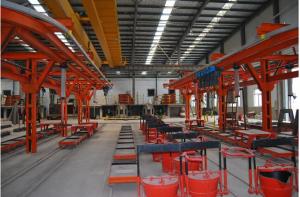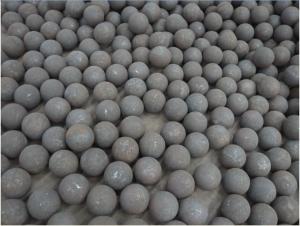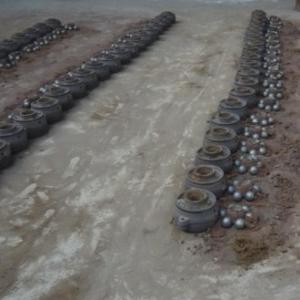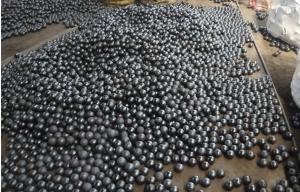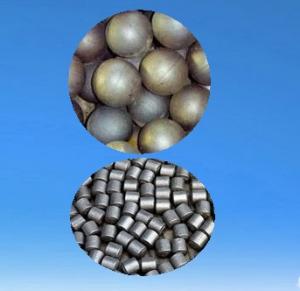Rolling Forged Steel Grinding Ball with Supper Hardness apply for all kinds of Mineral Processing
- Loading Port:
- China Main Port
- Payment Terms:
- TT or LC
- Min Order Qty:
- 25M.T. m.t.
- Supply Capability:
- 200000M.T./Year m.t./month
OKorder Service Pledge
OKorder Financial Service
You Might Also Like
1. Specification of Forged Steel mineral ues Grinding Ball with High Hardness and Low Breakage Rate
Size: 20mm-150mm
Hardness:HRC58-65; Chrome content:11-14%
Nominal Diameter | Diameter Tolerance | Weight of Single Ball | Numbers of Per Ton |
(mm) | (mm) | (g) | 32150 |
20 | +2 -1 | 32 | 15625 |
25 | 64 | 9090 | |
30 | 110 | 5645 | |
40 | 263 | 3802 | |
50 | 513 | 1949 | |
60 | +3 -2 | 888 | 1126 |
70 | 1410 | 709 | |
80 | 2104 | 485 | |
90 | 2996 | 333 | |
100 | 4110 | 243 | |
110 | +4 -2 | 5457 | 182 |
120 | 7102 | 140 | |
130 | 9030 | 110 | |
140 | 11279 | 88 | |
150 | 13871 | 72 |
2. Applied Field of Forged Steel mineral ues Grinding Ball with High Hardness and Low Breakage Rate
1) Power Plant, 2) Mineral Processing,
3) Refractory Factory, 4) Cement Plant
3. Packing Information of Forged Steel mineral ues Grinding Ball with High Hardness and Low Breakage Rate
Container Bags: 1000Kgs/Container Bag
Steel Drums: 850Kgs/Drum
4. Photos of Forged Steel mineral ues Grinding Ball with High Hardness and Low Breakage Rate
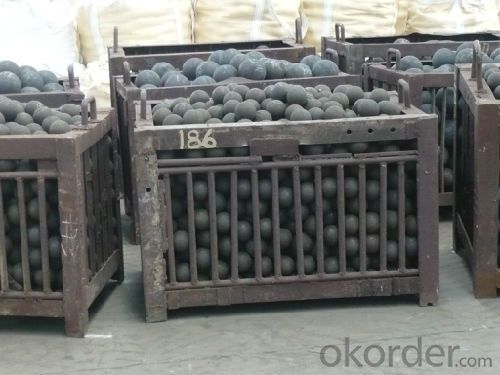
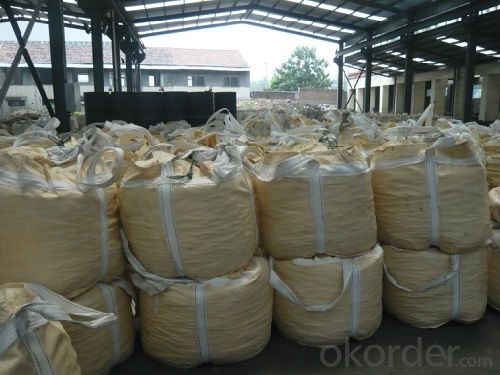
- Q: What is the ejection angle of the die casting (Tan Gang)?
- Especially deep hole, and customers to discuss, generally take 0.3-1 degrees is enough
- Q: Is the cast steel a casting part?
- Yes, molten steel is poured into the mold and cooled to become a casting. Can also cast iron, cast aluminum, plastic casting.
- Q: What is the difference between forging parts and casting parts?
- No, it's called die castingDifference: the die casting parts are simple in structure and large in batch sizeCasting: the use of a wide range of structures without restrictions
- Q: It is generally said that cast iron is re smelted by pig iron. My question is..:1 pig iron for melting iron, is directly cast into products (such as bed cover, etc.); or that is just the first pig iron smelting iron casting, such as to cover, bed and other products, will once again cast iron melt to casting?2, there are many castings to the engine. Are these castings made by the engine manufacturer themselves or bought by others?There is no need to answer all. Thank you!!!
- 1, qualified enterprises will directly iron ore into molten iron, and then poured into the mold, such a good product performance. I work in the cast iron industry, which I can tell you for sure.2, this, like the Great Wall Motor Company has its own parts production department, as well as the corresponding mold center, so it will be their own casting. If the manufacturer does not have these departments, they can only place orders for others to do.
- Q: the parts of the threaded hole is casting, casting the hole directly, and then tapping or casting, and then punch 10When the casting is ready, punch it again before tapping it Is the hole casting good or is it punched and tapped on the drilling machine after casting?
- Aluminum alloy die-casting parts or casting box and other parts of the threaded hole, in the case of processing conditions, it is best to use wire tapping or machine tool processing! Direct casting is not advocated.
- Q: Question, such as title, I hope I don't copy the definition of rolling and casting in Baidu encyclopedia, thank you
- The performance is too extensive, I think the following several people all fall into the erroneous zone directly, the performance includes a series of aspects:Mechanical properties: tensile strength, yield strength, elongation and contraction ratio of section and impact toughness after etc.
- Q: What is the difference between casting and stamping parts?
- Cold stamping is generally no longer done by cutting, or only a small amount of cutting is required. The precision and surface state of hot stamping parts are lower than those of cold stamping parts, but they are better than those of castings and forgings, and the amount of cutting is less.Stamping is mainly based on process classification, can be divided into separation process and forming process two major categories.
- Q: We are small castings, the need for surface treatment of shot blasting machine, about how much?
- according to the comprehensive consideration of factors such as yield, size of workpiece commonly used on the market the crawler shot blasting machine has Q324, Q326, Q328, Q3210, and each time the amount of their treatment were 125KG, 200KG, 400KG, 600KG, the specific use of what types also need to be determined according to the actual situation
- Q: How to solve casting defect casting?
- Prevention methodReduce the gas in the metal liquid and oxidize the slag, improve the fluidity of the metal liquidIncrease pouring temperature and pouring speed, strengthen slag collection, slag block or bottom pouring bag, teapot ladle pouring, can not cut off when pouring, prevent the slag from blocking the nozzle, and cause the casting to breakIncrease the sprue and sprue height, increase the runner section area and the sprue number, and improve the filling speed and the metal hydrostatic headImprove the casting design and increase the thickness of the thin-wall part of the castingChange the pouring position and pouring system, the casting thin wall plane is located at the top and away from the gate, to prevent the filling of liquid metal splashing, eddy current, avoid metal stream in the casting thin sections or core support, cold iron, insert the confluence, when necessary, take horizontal vertical pouring cold or inclined castingIncrease the permeability of core and sand, strengthen the exhaust of mould, and the quantity of air outlet and riser should be enoughChange the size and location of the core, the inner cold iron, the core support, the internal cold iron, the insert should be no rust, no oil pollutionCheck the type, tight box, press the operation of iron is safe, to prevent running fire
- Q: How can the casting be free of trachoma?
- 3, the gate is not facing sand core, flush sand core, will cause trachoma.
1. Manufacturer Overview
| Location | Shandong, China |
| Year Established | 1971 |
| Annual Output Value | US$50 Million - US$100 Million |
| Main Markets | Domestic Market, Southeast Asia, South Asia, North America, South America |
| Company Certifications | ISO9001;IS014001 Certificate |
2. Manufacturer Certificates
| a) Certification Name | |
| Range | |
| Reference | |
| Validity Period |
3. Manufacturer Capability
| a) Trade Capacity | |
| Nearest Port | Qingdao Port |
| Export Percentage | |
| No.of Employees in Trade Department | 6-10 People |
| Language Spoken: | English, Chinese, Korean |
| b) Factory Information | |
| Factory Size: | Above 60,000 square meters |
| No. of Production Lines | Above 10 |
| Contract Manufacturing | Forged Grinding Ball,Cast Grinding Ball,Casting Cylpebs,Grinding Rods,Decorative Steel Ball |
| Product Price Range | Average |
Send your message to us
Rolling Forged Steel Grinding Ball with Supper Hardness apply for all kinds of Mineral Processing
- Loading Port:
- China Main Port
- Payment Terms:
- TT or LC
- Min Order Qty:
- 25M.T. m.t.
- Supply Capability:
- 200000M.T./Year m.t./month
OKorder Service Pledge
OKorder Financial Service
Similar products
Hot products
Hot Searches
Related keywords
